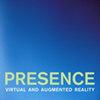The Effectiveness of Virtual Reality for Administering Spatial Navigation Training to Firefighters
IF 0.7
4区 计算机科学
Q4 COMPUTER SCIENCE, CYBERNETICS
引用次数: 311
Abstract
Because fire rescue personnel often enter unfamiliar buildings to perform critical tasks like rescues, the importance of finding new and improved ways to train route navigation is becoming paramount. This research was designed to compare three methods for training firefighters to navigate a rescue route in an unfamiliar building. Thirty firefighters from the Madison County, Alabama, area were trained to navigate through the Administrative Science Building at The University of Alabama in Huntsville. The firefighters, who had not had any experience with the Administrative Science Building prior to the experiment, were randomly assigned to one of three experimental training groups: Blueprint, Virtual Reality, or No Training (Control). After training, we measured the total navigation time and number of wrong turns exhibited by firefighters in the actual building. Participants were required to rescue a mock baby (a life-sized doll) following the specific trained route. Measures of test performance were compared among groups by using analyses of variance (ANOVAs). The results indicated that firefighters trained with virtual reality or blueprints performed a quicker and more accurate rescue than those without training. Furthermore, the speed and accuracy of rescue performance did not differ significantly between virtual reality and blueprint training groups. These results indicate that virtual reality training, if constructed and implemented properly, may provide an effective alternative to current navigation training methods. The results are discussed with regard to theories of transfer of training and human performance in virtual environments.虚拟现实技术在消防员空间导航训练中的应用效果
由于消防救援人员经常进入不熟悉的建筑物执行救援等关键任务,因此寻找新的和改进的方法来训练路线导航变得至关重要。这项研究的目的是比较三种训练消防员在不熟悉的建筑物中导航救援路线的方法。来自阿拉巴马州麦迪逊县地区的30名消防员接受了在亨茨维尔阿拉巴马大学行政科学大楼内穿行的训练。这些消防员在实验之前没有任何行政科学大楼的经验,他们被随机分配到三个实验训练组中的一个:蓝图、虚拟现实或无训练(对照组)。训练结束后,我们测量了消防员在实际建筑中表现出的总导航时间和错误转弯次数。参与者被要求按照特定的训练路线救出一个模拟婴儿(一个真人大小的娃娃)。采用方差分析(ANOVAs)比较各组间的测试性能。结果表明,接受过虚拟现实或蓝图训练的消防员比没有接受过训练的消防员进行了更快、更准确的救援。此外,在虚拟现实训练组和蓝图训练组之间,救援表现的速度和准确性没有显著差异。这些结果表明,如果构建和实施得当,虚拟现实训练可以为当前的导航训练方法提供有效的替代方案。从训练转移理论和人在虚拟环境中的表现两方面对研究结果进行了讨论。
本文章由计算机程序翻译,如有差异,请以英文原文为准。
求助全文
约1分钟内获得全文
求助全文
来源期刊
CiteScore
2.20
自引率
0.00%
发文量
8
审稿时长
>12 weeks

 求助内容:
求助内容: 应助结果提醒方式:
应助结果提醒方式:


